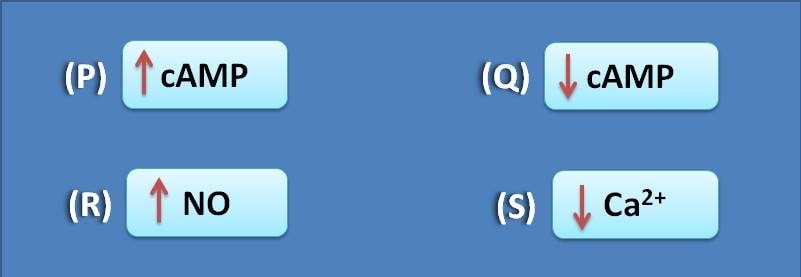- Home >
- Test papers >
MCQ on antihypertensives: Page-1

(A) Q and S
(B) P and R
(C) R only
(D) P only
Prostaglandins act on corresponding receptors which are coupled with various mediators that produce either contraction or relaxation of smooth muscle. Vasodilatory prostaglandins like PG D2 and PG I2 are coupled with increase in cAMP. Smooth muscle contracting prostaglandins like PG F2 and thromboxane A2 are couple with increase in calcium. Hence they produce uterine contractions and platelet aggregation respectively. PG E2 can produce vasodilatation through EP2 and EP4 receptors which are coupled with increase in cAMP . It can also produce other smooth muscle contraction through EP1 and EP3 receptors which are coupled with increase in calcium and decrease in cAMP respectively.
(A) Release of NO
(B) Opening of K+ channels
(C) Increase in cAMP
(D) Increase in cGMP
Prostaglandins produce vasodilatation by increase in cAMP. EDHF are endothelium derived hyperpolarizing factors which act by opening of potassium channels. Minoxidil and chromokalim act like EDHF. EDRF are the endothelium derived relaxing factors which act by release of nitric oxide which then increases cGMP. Organic nitrates work like EDRF.
(A) Noradrenaline
(B) Dopamine
(C) 5-HT
(D) Acetylcholine
Dopamine selectively produces renal vasodilatation. Fenoldapam is a dopamine agonist which is used in severe hypertension for increasing diuresis thereby increasing the excretion of sodium.
(A) Bosentan
(B) Enalkiren
(C) Chromokalim
(D) Minoxidil
Enalkiren is a rennin inhibitor, chromokalim, minoxidil are potassium channel activators.
(A) Bosentan
(B) Nesiritide
(C) Nicorandil
(D) Chromokalim
Bosentan is an endothelin receptor antagonist.